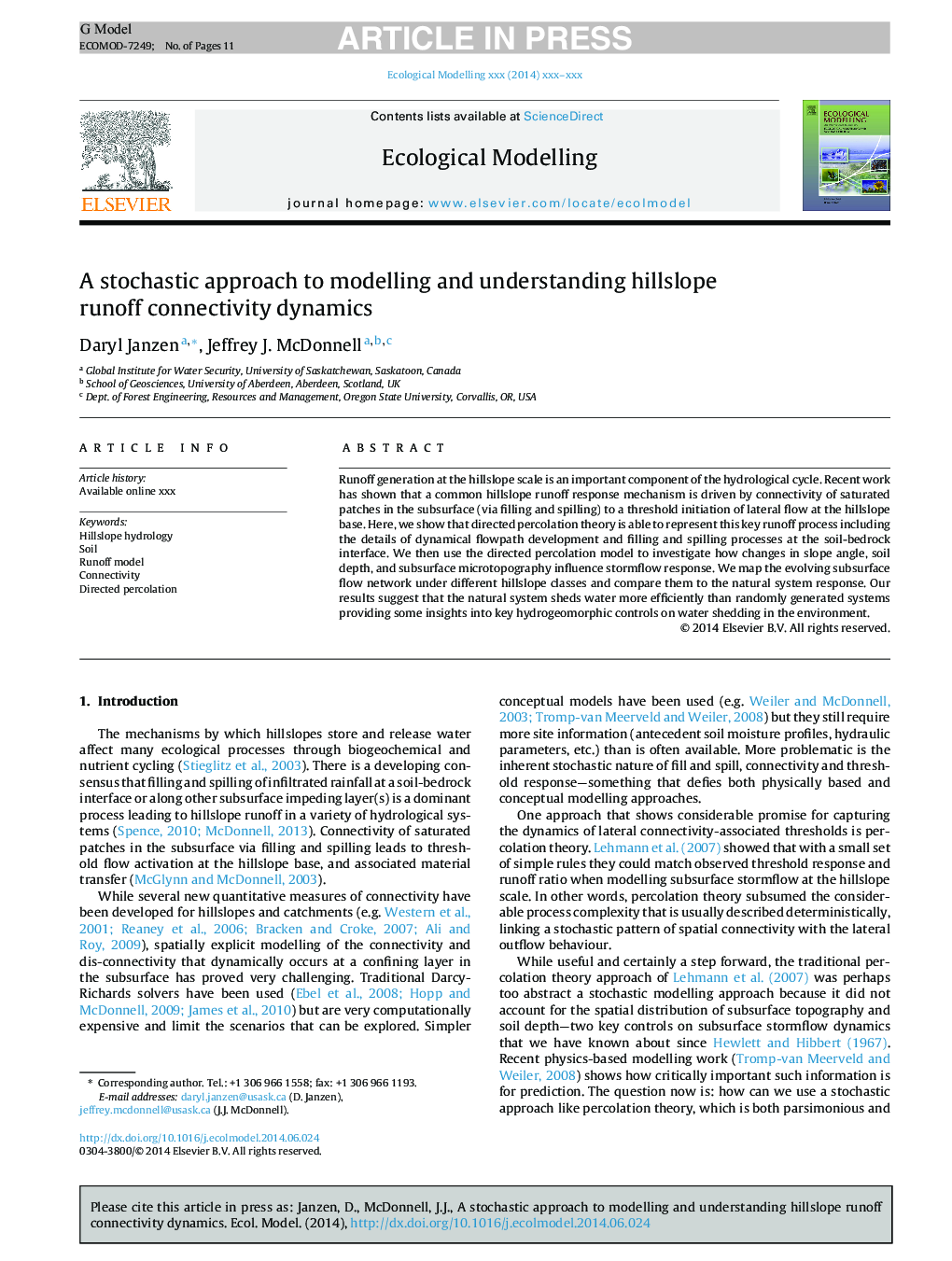| Article ID | Journal | Published Year | Pages | File Type |
|---|---|---|---|---|
| 6296685 | Ecological Modelling | 2015 | 11 Pages |
Abstract
Runoff generation at the hillslope scale is an important component of the hydrological cycle. Recent work has shown that a common hillslope runoff response mechanism is driven by connectivity of saturated patches in the subsurface (via filling and spilling) to a threshold initiation of lateral flow at the hillslope base. Here, we show that directed percolation theory is able to represent this key runoff process including the details of dynamical flowpath development and filling and spilling processes at the soil-bedrock interface. We then use the directed percolation model to investigate how changes in slope angle, soil depth, and subsurface microtopography influence stormflow response. We map the evolving subsurface flow network under different hillslope classes and compare them to the natural system response. Our results suggest that the natural system sheds water more efficiently than randomly generated systems providing some insights into key hydrogeomorphic controls on water shedding in the environment.
Related Topics
Life Sciences
Agricultural and Biological Sciences
Ecology, Evolution, Behavior and Systematics
Authors
Daryl Janzen, Jeffrey J. McDonnell,
